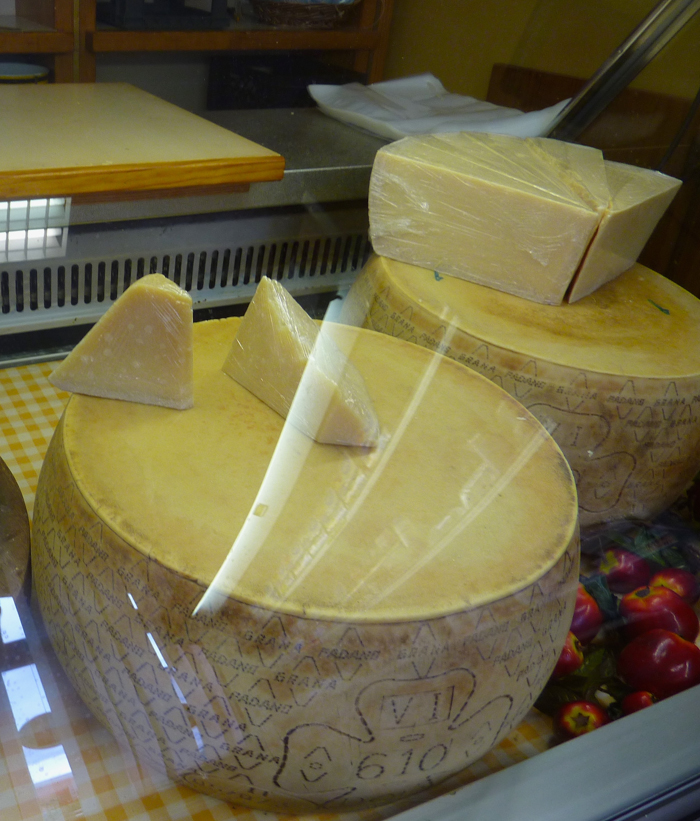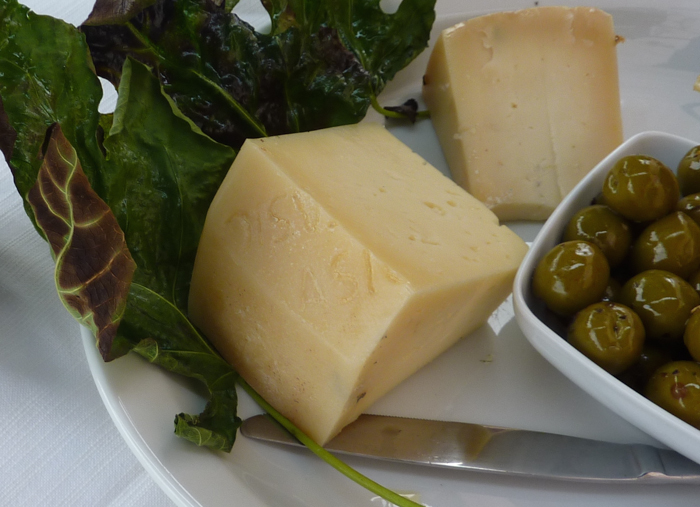This cheese is named after the capital of the Altopiano dei Sette Comuni (Plateau of the Seven Communes.) This area, located in the north of the Province of Vicenza, was famous in the year 1000 for the high quality of its wool and for its excellent cheese, then called pegorin (sheep’s cheese). In the early 16th century, the local farmers gradually changed from sheep farming to cattle farming, as the latter was more profitable. So milk available for dairy products was now cow’s milk, rather than sheep’s milk, and the local cheeses were produced used the cow’s milk. The asiago cheese we know today was born, however, even today, some locals still refer to the cheese as pegorin.

Asiago has an official Italian DOP (Denominazione di Origine Protetta) designation. The only ‘official’ Asiago is produced in the area of the town of Asiago, in the province of Vicenza. Asiago DOP cheese’s authentic production process dates back to the year 1000, when the cheese was made with ewe’s milk. It became an important market for cheese in the early 1500s, when a large amount of woodlands in the area were converted to pasture and mountain farms. Today, the production of Asiago also includes the upper Po valley and the mountains of Trentino, as well as parts of Treviso and Padova. In order to earn the DOP designation, the milk must be collected from this area, and the cheese must be produced in this region. Most Asiago, however, is made elsewhere using the same cultures and techniques.

Traditionally made Asiago is referred to as Asiago d'Allevo, or matured. Asiago d'alleva is made from raw milk from Pezzata Nero and Bruno Alpina cows, which is allowed to stand for 6-12 hours and the cream is then skimmed off. Milk from two milkings is used, only the first being skimmed. Coagulation occurs at 35°C, then the soft curd is broken up and cooked twice, once at 40°C and then next at 47°C. The cooked curds are transferred into moulds, and the rounds are either dry salted or wet salted in brine baths before maturing. Asiago is referred to as mezzano if it has matured for at least 3 months, and is referred to as vecchio if it has matured for a minimum of nine months. Stravecchio is aged even longer.
The outer rind is thin, and becomes increasing brown as it matures. The inner cheese is white, semi-hard, with an even texture. The vecchio or stravecchio versions may be used for grating as the body becomes harder. The cheese also develops a fuller flavor and fragrance as it matures.
Asiago d’Allevo vecchio and stravecchio made in the province of Trentino is sometimes referred to as Vezzena, one of the plateaus in Trentino where it is produced.
Recently, a fresh type of asiago has become increasingly popular, Asiago Pressato. It is produced in larger dairies in lower lying areas. It is made from pasteurized whole cow’s milk, the curd is first dry-salted. The curd is broken up, then cooked and drained, transferred into moulds and pressed (pressato). It is matured over a period of 20 to 40 days, and is soft to the touch, with small holes in the body, and pale in color with a mild, milky, delicate flavor.


